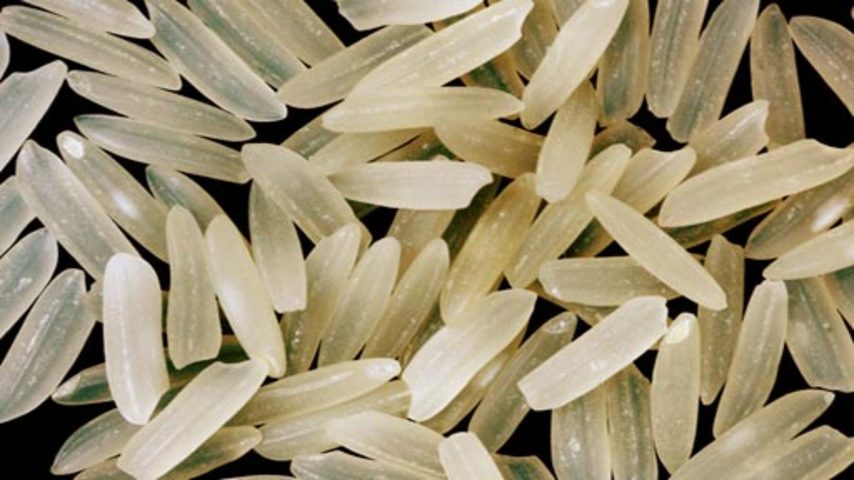Tips & Techniques > What Makes Rice Sticky?

Rice contains two types of starch: amylose and amylopectin. The amount of each starch, which is different for every type of rice, determines the texture of the cooked rice and whether it will be fluffy, creamy or sticky. As rice cooks, both the heat and liquid penetrate the grain and the starch molecules inside the grain break down. As the liquid is absorbed, each starch carries out a different task.
Amylose is a long, straight starch molecule that does not gelatinize during cooking. Grains with high amounts of amylose will be fully and separated once cooked. Long grain rice typically has high amounts of amylose (about 22%) and the least amount of amylopectin (ex., long grain varieties, Basmati and Jasmine).
Amylopectin is a highly branched starch molecule that is responsible for making rice gelatinous and sticky. Rice with a high amount of amylopectin will be very sticky once cooked. Short grain rice typically contains the lowest levels of amylose and the highest of amylopectin (ex., short grain, Asian-style types of rice). The characteristics of some medium grain rice tend to fall somewhere in between. They typically contain about 15-17% amylose and a good amount of amylopectin which results in a creamy consistency (Italian, Arborio, and paella-style types of rice).
Sticky rice (a.k.a., glutinous, waxy or sweet rice) is very sticky when cooked. It contains the highest amount of amylopectin and no amylose. It’s often used to make sweet dishes in Asia.